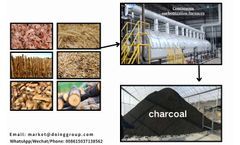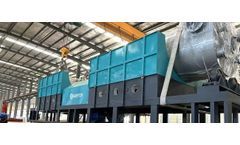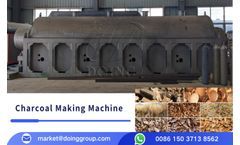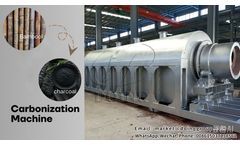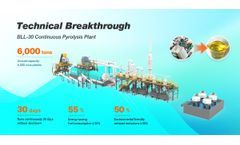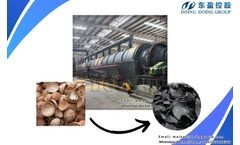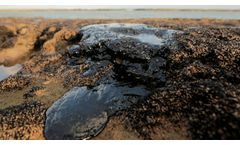Pyrolysis And Why Is Pet Not Suitable For Pyrolysis Articles & Analysis
715 articles found
Charcoal production has historically been associated with high levels of particulate matter, volatile organic compounds, and greenhouse gas emissions. Traditional carbonization methods, often reliant on open pits or rudimentary kilns, release uncontrolled smoke and pollutants, contributing to environmental degradation. Modern charcoal making machines, integrated with a biomass carbonization ...
Catalytic pyrolysis has emerged as a pivotal advancement in thermal conversion technologies, particularly for transforming complex hydrocarbon feedstocks into higher-value liquid fuels. By incorporating specialized catalysts into the pyrolysis process, industrial operators can significantly improve oil yield, enhance product quality, and optimize energy efficiency. This methodology is ...
As the world moves toward a low-carbon future, alternative fuels and circular economy solutions are gaining unprecedented attention. Among them, pyrolysis oil—a renewable liquid fuel produced from the thermal decomposition of biomass or plastic waste—holds immense promise. However, to ensure sustainability and traceability in its production and use, certification standards are ...
Starting a small pyrolysis project can be an excellent way to generate profit with a relatively low investment. Pyrolysis, the process of converting organic materials like plastic, rubber, and biomass into valuable products such as fuel, carbon black, and gas, offers substantial financial opportunities for small-scale entrepreneurs. In this blog post, we'll explore how a small pyrolysis machine ...
Tire pyrolysis has garnered significant attention in recent years as an innovative solution to the growing problem of tire waste. By heating tires in the absence of oxygen, pyrolysis converts them into valuable products such as oils, gases, and solid carbon black. Among these byproducts, carbon black plays a critical role in various industries, from rubber production to electronics. However, the ...
The demand for high-quality biochar is surging, thanks to its key role in sustainable agriculture (soil improvement, carbon sequestration), renewable energy and advanced filtration technology. For companies ready to take advantage of this growth opportunity, efficient and sustainable production scale is essential. Biochar is a solid product formed by heating biomass in the absence of oxygen ...
Establishing a production line with a sawdust charcoal making machine offers a profitable and sustainable business model. Driven by rising demand for clean energy alternatives and efficient biomass utilization, this sector attracts investors seeking high returns with moderate operational risk. To ensure viability, the investment must be strategically structured across key parameters including ...
Pyrolysis technology has become a cornerstone in waste-to-energy and carbon-negative operations. Central to its efficiency and output quality is the pyrolysis reactor—where thermal decomposition of organic materials occurs in the absence of oxygen. Innovations in reactor design are reshaping the performance, scalability, and environmental footprint of modern pyrolysis plants. As demand ...
The coconut industry is traditionally known for producing oil, water, milk, and coir, but there’s an often-overlooked byproduct with tremendous untapped value—the coconut shell. Once considered agricultural waste, coconut shells are now gaining recognition as a sustainable raw material for charcoal production, opening up new income streams and adding value across the supply chain. ...
As global emphasis on energy efficiency intensifies, advancements in pyrolysis technology have shifted toward optimizing heat utilization and minimizing energy loss. Central to this evolution is the refinement of continuous pyrolysis plant design, which now integrates cutting-edge reactor engineering to enhance thermal performance, throughput, and system longevity. Evolution of Reactor ...
In modern charcoal production, charcoal kilns, as an efficient production tool, are widely used in the production of charcoal. The core principle of charcoal kiln production is to heat wood or biomass at high temperature to remove moisture and volatiles from the raw materials, leaving carbon-rich charcoal. This process is called "carbonization".When producing charcoal, choosing the right raw ...
The demand for sustainable energy solutions and the urgent need for effective waste management have led to significant innovations in green technologies. One such solution that is gaining global attention is the biomass pyrolysis plant. These facilities, designed to convert organic materials into valuable byproducts like bio-oil, syngas, and biochar, are poised to play a crucial role in shaping ...
PV panel recycling plant is designed to process end-of-life photovoltaic modules and recover valuable resources through dismantling, crushing, and sorting procedures, achieving material circularity. Processing materials: Common recycling targets include monocrystalline silicon PV panels, polycrystalline silicon PV panels, and thin-film amorphous silicon variants. These diverse module types ...
As a sustainable natural resource, bamboo has been increasingly used in various fields in recent years, from building materials to home decoration. Its environmental protection and durability are widely favored. As an important derivative of bamboo, bamboo charcoal not only has good adsorption, but also shows great potential in agriculture, environmental protection and other aspects. In order to ...
The continuous pyrolysis equipment for plastic, tire, and oil sludge cracking has seen significant advancements in technology that offer improved efficiency, cost savings, and environmental benefits. Below are the three key technological breakthroughs that set this equipment apart: 1. Efficient Oil-Gas Condensation and Anti-Polymerization Technology This technology uses a direct spray mixing ...
Coconut shell charcoal, as an environmentally friendly and efficient fuel, is widely used in many fields such as home barbecue, industrial production and air purification. Although its making process involves multiple steps, each step from raw material preparation to the final product is crucial to ensure the quality and effectiveness of the final product. Next, we will introduce the making ...
Making charcoal through a carbonization process in a plant involves heating organic materials, such as wood, in the absence of oxygen to drive off volatile compounds and leave behind carbon-rich material. This method is also known as pyrolysis and is applicable to various raw materials for producing biochar or charcoal, including but not limited to wood, fruit shells (such as coconut shells, palm ...
In today's world, with the continuous improvement of environmental awareness and the growing demand for energy, biomass energy, as a renewable and clean form of energy, is gradually attracting global attention. With its advanced carbonization equipment, DOING is leading the innovation and development in the field of biomass energy, injecting new vitality into the global energy transformation. ...
The global environmental impact of industrial waste, particularly oil sludge, has become an increasingly pressing issue. The accumulation of oil-contaminated waste in landfills or open environments leads to severe soil contamination, adversely affecting soil quality, biodiversity, and agricultural productivity. However, advancements in pyrolysis technology offer a promising solution to alleviate ...
Pyrolysis reactors play a crucial role in the conversion of waste materials into useful products, such as bio-oil, syngas, and char. Whether you are considering investing in a pyrolysis reactor for industrial purposes or as part of a waste-to-energy project, it's essential to understand the key components of these reactors and the factors to consider when purchasing one. This blog will provide an ...




